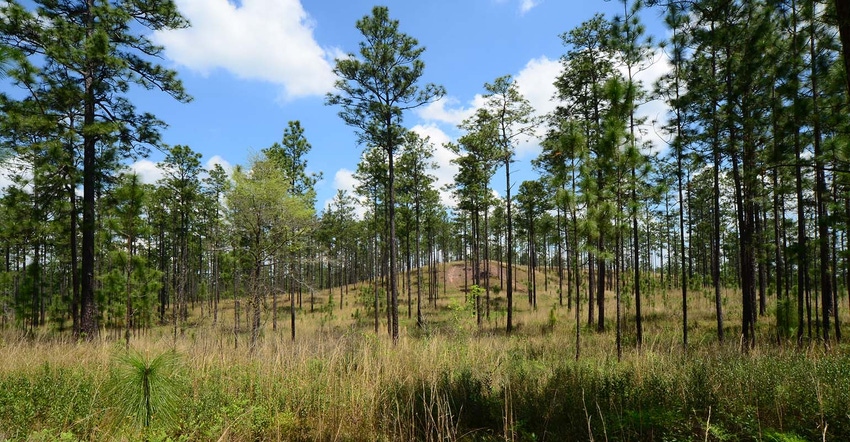June 22, 2017

The Natural Resources Conservation Service has unveiled an effort to increase the abundance and improve the health of longleaf pine forests in Alabama, Florida, Georgia, Louisiana, Mississippi, North Carolina, South Carolina, Texas and Virginia. The two-year strategy aims to help private landowners restore and protect 400,000 acres of longleaf pine forests.
“Together, with the help of private landowners and conservation partners, we’ve made significant progress in reversing the decline of longleaf pine forests since 2010,” said NRCS Acting Chief Leonard Jordan. “But we still have much more work to do, and this strategy serves as a roadmap for our work with landowners to keep accelerating the restoration of this critical ecosystem.”
Longleaf pine forests once encompassed more than 90 million acres across the Southeast, but over the past two centuries, development, timbering and fire suppression have reduced the forested area by almost 97%. Because of the work of public-private partnerships, the amount of longleaf pine forests has grown from 3 million acres to nearly 5 million acres, reversing a century-long decline across the region.
NRCS offers technical and financial assistance to landowners to help plan and implement voluntary forestry practices that support forests and productive forestry operations. These practices benefit landowners as they can lead to an increase in forest products, improved wildlife habitat and more efficient operations.
NRCS is focusing on four main conservation actions:
Managing the over-growth of vegetation competing with longleaf pine;
Using prescribed fire to mimic natural processes that help longleaf pine thrive;
Planting new forests; and
Protecting existing forests through easements.
The strategy includes NRCS’s Longleaf Pine Initiative (LLPI), Working Lands for Wildlife (WLFW) and Regional Conservation Partnership Program, among other efforts. Landowners have restored nearly 400,000 acres through LLPI during the past seven years and 278,000 acres through WLFW during the past five years.
“We are grateful to the region’s landowners who are stepping up to voluntarily improve the health of their forests,” Jordan said.
The decline of longleaf pine forests has negatively impacted wildlife populations, including the gopher tortoise, red-cockaded woodpecker and black pine snake. More than 30 animal species that are federally listed as endangered or threatened depend on these forests, and more species are considered to be at-risk.
The strategy also helps NRCS to support the overall strategies of America’s Longleaf Restoration Initiative, which unites numerous public and private partners that actively support the range-wide efforts to increase the longleaf pine acreage from its 3.4 million acres to 8 million acres by 2025.
Source: USDA NRCS
You May Also Like




